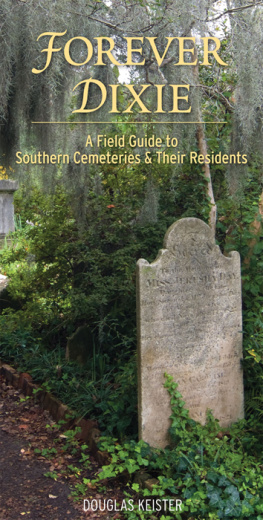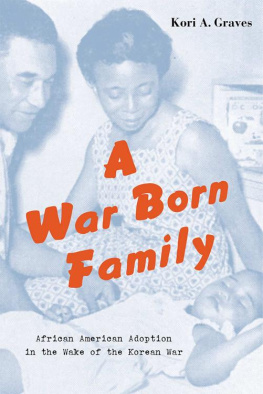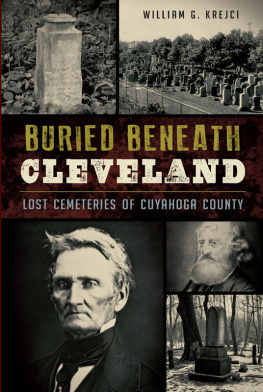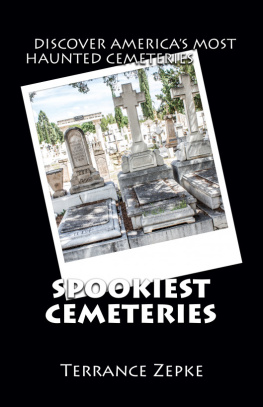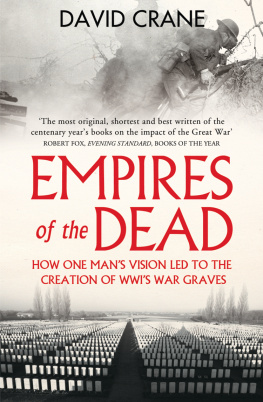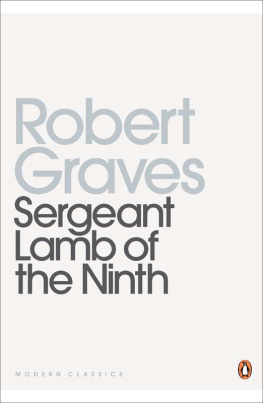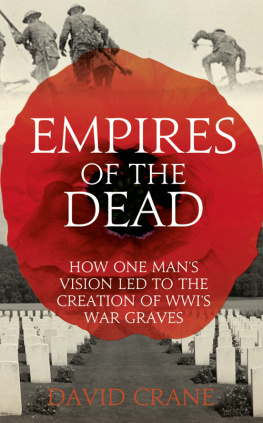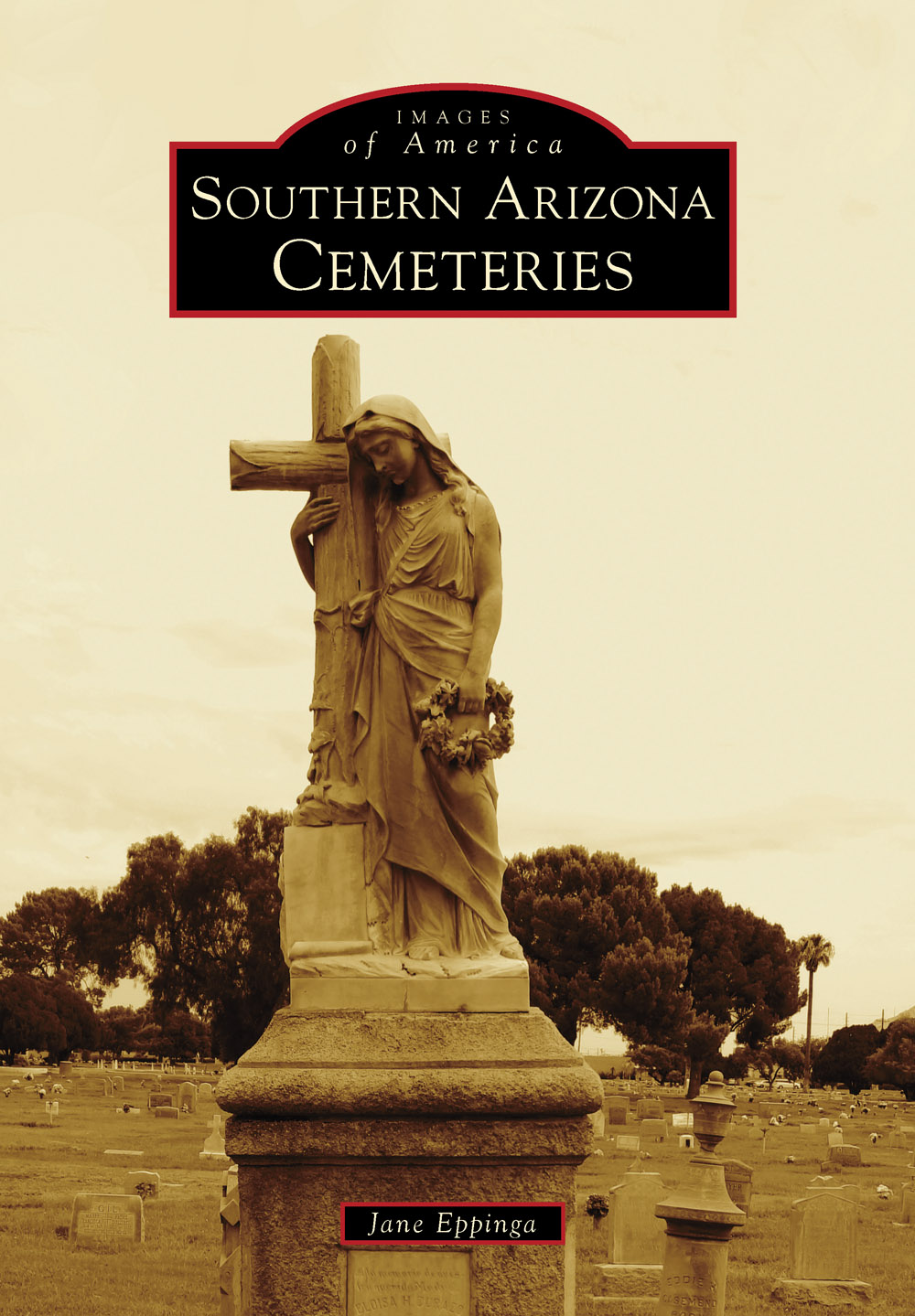
IMAGES
of America
SOUTHERN ARIZONA
CEMETERIES
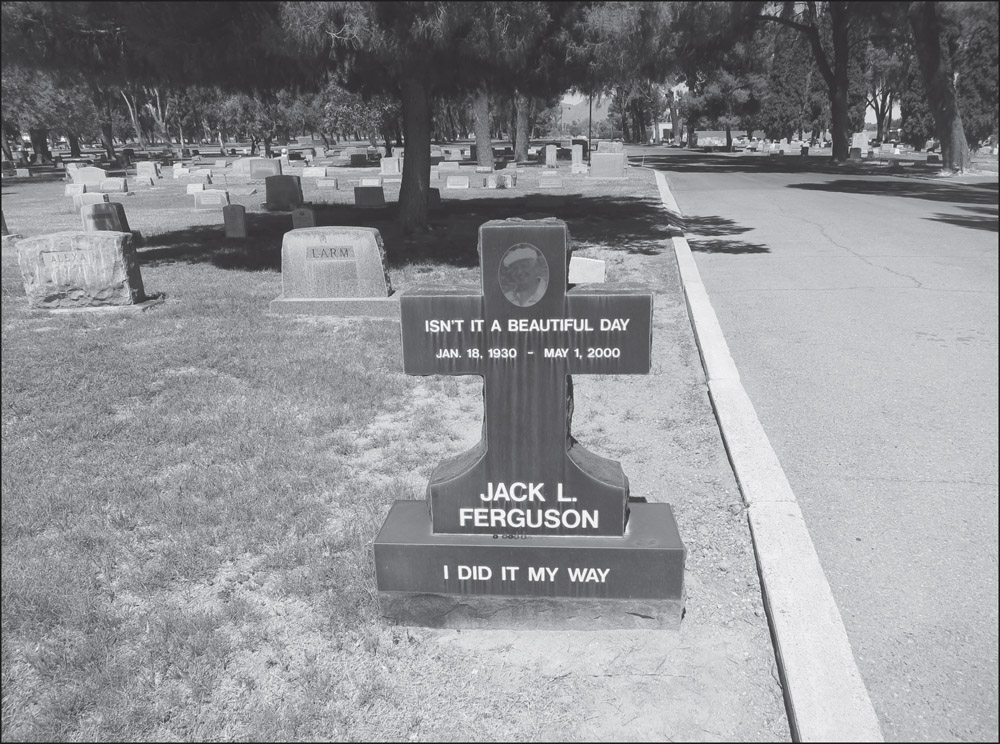
The gravestone of Jack L. Ferguson is shown here. Ferguson was born on January 18, 1930, and died on May 1, 2000, at age 70. (Courtesy of the author.)
ON THE COVER: A woman clasping a cross and holding a crown of thorns adorns the grave of Eloisa H. Durazo (18621911) in Holy Hope Cemetery in Tucson, Arizona. (Courtesy of the author.)
IMAGES
of America
SOUTHERN ARIZONA
CEMETERIES
Jane Eppinga

Copyright 2014 by Jane Eppinga
ISBN 978-1-4671-3123-0
Ebook ISBN 9781439644683
Published by Arcadia Publishing
Charleston, South Carolina
Library of Congress Control Number: 2013946007
For all general information, please contact Arcadia Publishing:
Telephone 843-853-2070
Fax 843-853-0044
E-mail
For customer service and orders:
Toll-Free 1-888-313-2665
Visit us on the Internet at www.arcadiapublishing.com
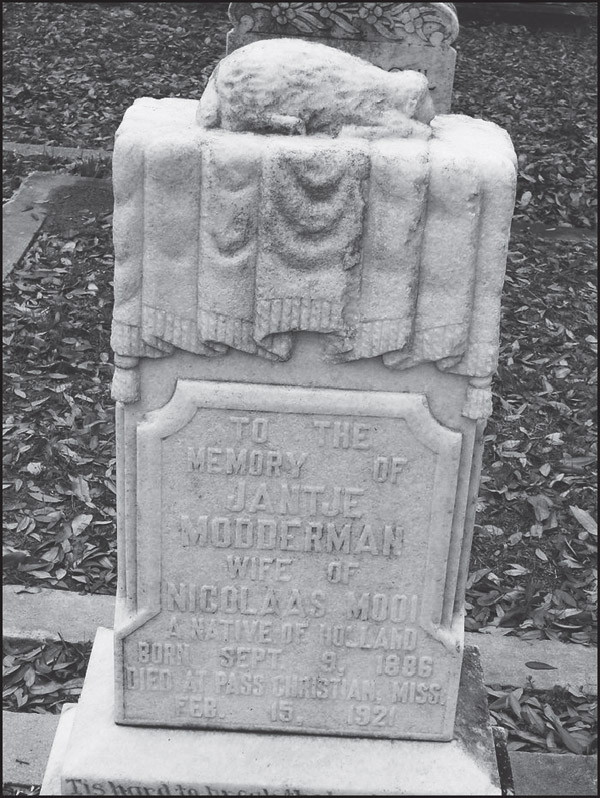
Dedicated to my grandmother, Jantje Modderman Mooi, who died in 1921, at the age of 34, while giving birth to her 14th child.
CONTENTS
ACKNOWLEDGMENTS
The work of a book is never entirely the work of one person, and so it is with Southern Arizona Cemeteries. Now is the time to list the individuals and organizations that have generously given their assistance. The Arizona Historical Society Libraries and Archives, the Library of Congress, Stephen Gregory (Fort Huachuca Museum), Khaleel Saba and Leslie Matthaei at the Western Archeological and Conservation Center (WACC), Kristin Sanderson and Fort Bowie, Susan and Brian Ballard, John Horne from the Baseball Hall of Fame, Carolyn OBagy Davis, Jeanette Done, Mary Kasulaitis, Catherine Sutherland Hartline (niece of Frank O. Sutherland and great-granddaughter of William H. Sutherland), and Richard Lapidus all supplied images and information. Eileen Grade and Anne Vandenberg (with Evergreen Cemetery) and Kay Mullenax and Tammy Turner (with Holy Hope Cemetery) were especially helpful. Ilona Smerekanich and Andy Haratyk provided information on the Evergreen Cemetery in Bisbee. Lincoln Chin, from the Tucson Chinese Cultural Center, translated Chinese tombstones. My cemeterying friends include Alene Fletcher, Betty Barr, and Betty Leavengood. No book sees the light of day without the aid of a publisher and editor, and I am grateful to Alyssa Jones and the Arcadia Publishing staff. Finally, the biggest contributors are those pioneers who left their stones on a place called Southern Arizona.
Unless otherwise noted, all images appear courtesy of the author.
INTRODUCTION
Throughout the ages, humans have had a need to mark the time and place when and where people make the final stop on their journey from this world to the next. Sometimes the marker is a simple cross on rock-covered earth; at other times, it is an elaborate tombstone that tells something of the individuals life. Early graves were placed close together without regard to religion, fraternal association, or nationality, but as urban areas grew, people became more picky about whom they did the final big sleepover with. One commonality across these disparate groups is the observance of rituals that are supposed to ward off evil spirits and guarantee the deceased a safe journey to heaven. The tombstones might be simple wooden crosses with inscriptions or structures richly covered with symbolism. Some ritualsthe firing of guns, the ringing of funeral bells, the wailing of chantsare intended to scare away other ghosts. In many cemeteries, graves are oriented so that bodies lie with their heads to the west, a practice attributed to the belief that the final summons to judgment will come from the east.
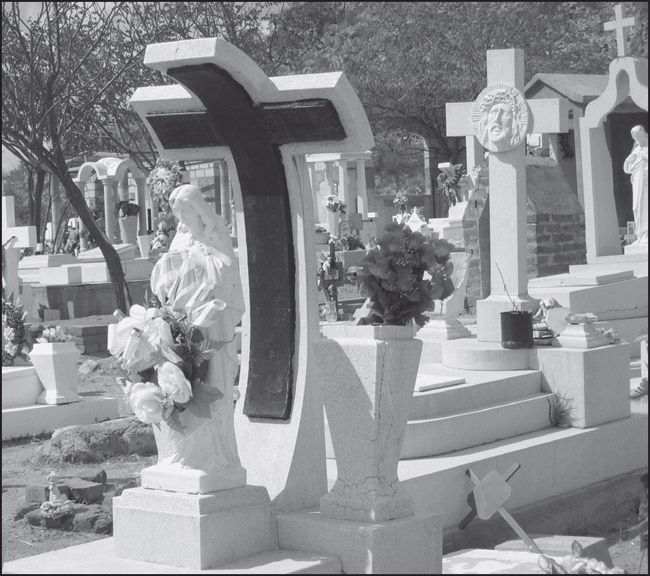
Sasabe, Arizona, and Sasabe, Sonora, Mexico, grew out of a private development by rancher Carlos Escalante. Situated on the border, a customhouse for these two towns was erected in 1935. The Sasabe cemeterio, pictured here while decorated for the Day of the Dead, reflects the influence of the culture that shaped Arizona. Da de los Muertos (Day of the Dead) is a festive occasion characterized by families visiting cemeteries, placing marigolds on headstones, making offerings to the dead, and exchanging sugar skeletons and skulls.
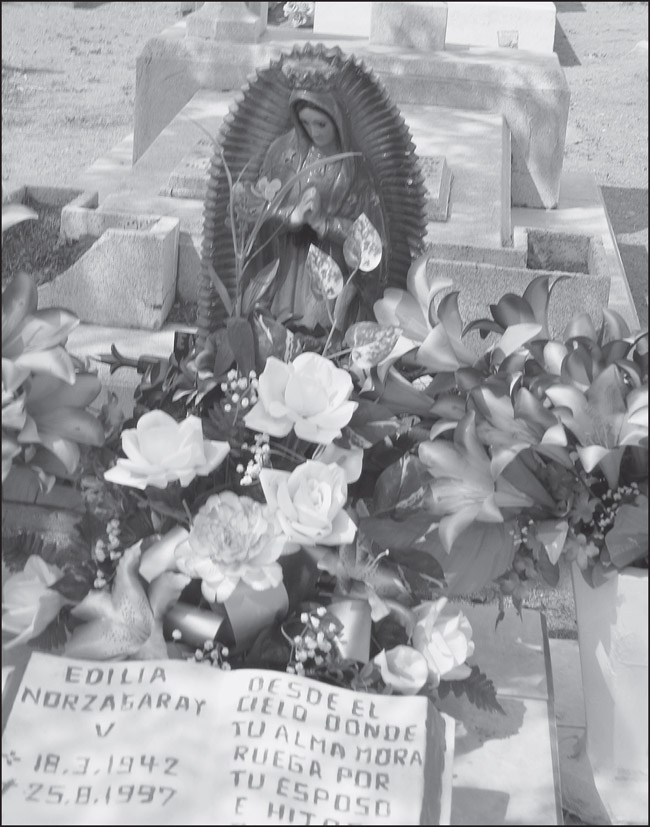
Our Lady of Guadalupe is the only saint who wears a full-body halo, or esplendora. While walking from his village to Mexico City on December 9, 1531, a peasant named Juan Diego saw a woman surrounded by light. He recognized the Virgin Mary and told his story to Archbishop Zumrraga, who instructed him to ask her for a miraculous sign to prove her identity. The Virgin told Juan Diego to gather flowers from the top of Tepeyac Hill even though it was December. He found roses, which he took to the archbishop. When he opened his cloak before Zumrraga, the roses fell to the floor and left the image of the Virgin of Guadalupe on the fabric.
One
BABYLAND
There are few things as poignant as a tiny tombstone marking the death of a child whose time on earth is measured in just a few minutes or a few years. Childrens tombstones often speak of angels called to heaven. Sometimes, angels are used for comfort and to show protection. Lambs, imparting the innocence of children, are often found on graves. Family photographs may be taken with the deceased. Customs surrounding the burial of children in Southern Arizona are especially influenced by the Mexican Day of the Dead celebrations. On October 31, families welcome the souls of the deceased back to earth for one day. Their graves are decorated with flowers, fruits, andin the case of childrentoys. For three years after the death of a child, the godparents decorate arches over the graves in the belief that the soul enters eternity through arches. The church bells ring, calling childrens souls and the living relatives, and incense provides an aroma to guide the returning spirits.
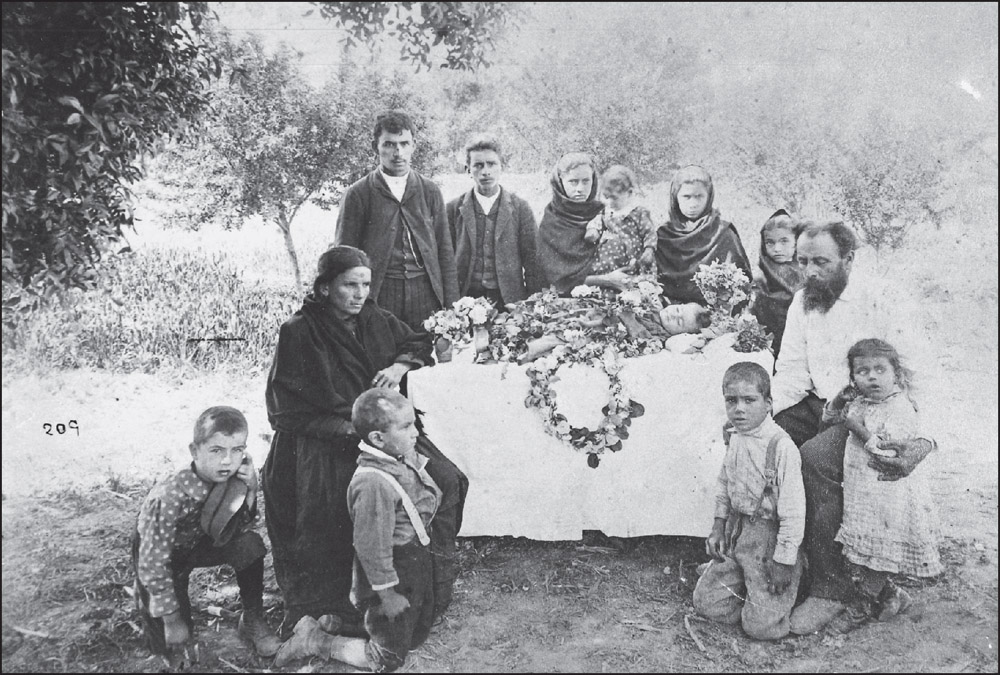
Pioneer families like Leonardo Romeros often had portraitslike this 1890 photographtaken with a deceased person. From left to right are Feliciano, Librada, Ysidro (kneeling), Leonardo Jr., Diego, Ramona, three unidentified people, Leonardo Sr., and two unidentified children. With the advent of photography, memories could finally be made tangible. (Courtesy of the Arizona Historical Society.)
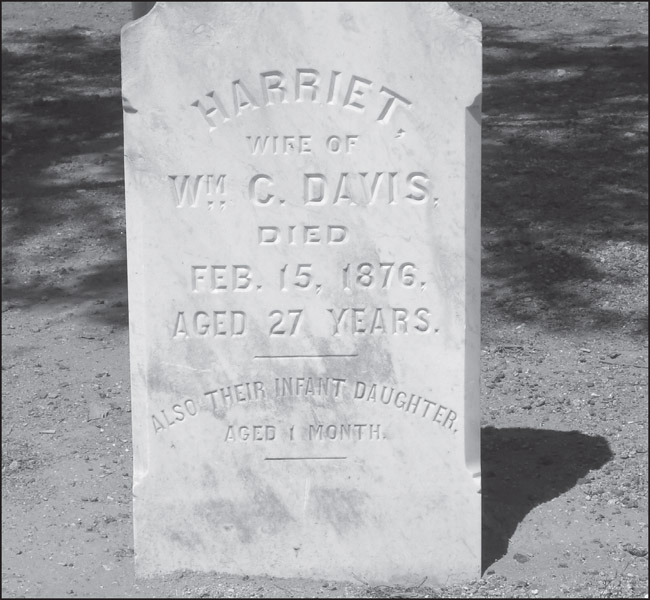
The death of a young mother and her one-month-old infant daughter is all the more heartrending when one considers that she is buried in the Pima County indigent cemetery. Harriet Davis died on February 15, 1876. She was 27 years old when she died, but her birth date is not known. She and her daughter were originally buried in Tucsons downtown cemetery.
Next page


